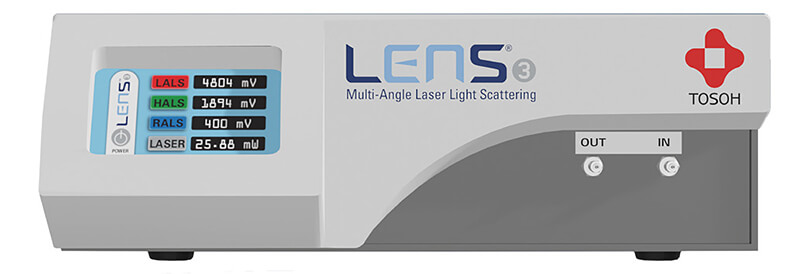Light scattering of macromolecules in solution has seen increasing interest over the past decades from scientists studying polymers and proteins. Since the mid 1950’s and its inception, size exclusion (or gel permeation) chromatography (GPC/SEC) has been the standard technique for the characterization of molecular weight distributions by separating macromolecules according to their size. The addition of light scattering detection online with GPC/SEC systems allows the measurement of true – or absolute – molecular weight of macromolecules, as opposed to the relative values obtained from conventional column calibration techniques. Moreover, light scattering can also provide size and conformation of macromolecules without any assumption on shape.
In general, light can be physically described as a propagating electromagnetic field. When a beam of light hits a molecule, the incident oscillating electric field creates an oscillating dipole within the molecule. These oscillating electrons generate a new electromagnetic radiation – which is called scattered light – in all directions of space.
If the molecules are small enough in comparison with the wavelength of the incident light, then they can be considered point scatterers and scatter light equally in all directions. This is called isotropic scattering.
For bigger molecules, light is scattered by multiple points within the molecule. Interferences between the scattered light from different sources then occur, due to phase shift, in all directions except that of the incident beam. The further away from the incident light, the more interferences. As a result, the intensity of the scattered light decreases with increasing angle of observation. This phenomenon is called angular dependence.






